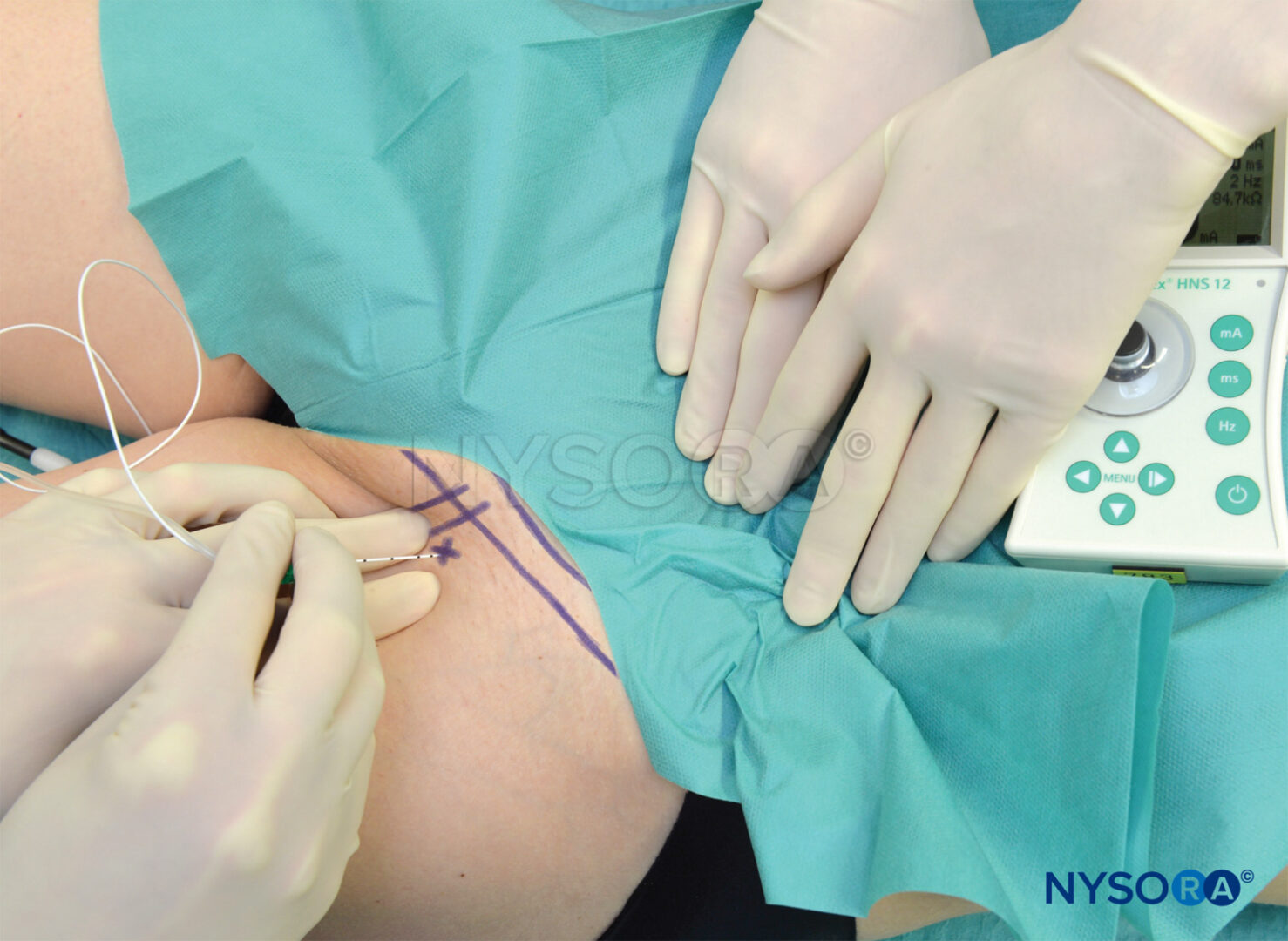Doctors use genicular nerve blocks to test the effectiveness of the procedure on a persons knee pain. The treatment is also referred to as neurotomy.
 Watch An Adductor Canal Nerve Block For Total Knee Replacement Does It Work Youtube
Watch An Adductor Canal Nerve Block For Total Knee Replacement Does It Work Youtube
FNB is given as a single injection or as continuous infusion of numbing.

Block for knee replacement. Total knee replacement TKR produces severe postoperative painPeripheral nerve blocks can be used as analgesic adjuncts for TKR but the efficacy of femoral nerve blocks alone is controversial. Proper placement of the femoral nerve block is key. 15 Zeilen In recent years the focus of acute pain management strategies following total.
It can be used before other surgeries such as anterior cruciate ligament ACL reconstruction as well. In these cases the genicular nerve block procedure can be a great bridge for them that allows some relief while they await knee replacement. Preemptive and multimodal pain control protocols have been introduced to enhance rehabilitation after total knee arthroplasty TKA.
We performed this study to determine. Femoral nerve blocks for acute postoperative pain after knee replacement surgery. We determined the complication rate associated with preoperative femoral nerve block FNB for TKA.
The MESH term knee replacement and knee arthroplasty were queried and combined with adductor canal femoral triangle saphenous nerve genicular nerve obturator nerve IPACK ie infiltration between the popliteal artery and the capsule of the knee and popliteal plexus. Since the focus of the current review revolves around motor-sparing nerve blocks trials investigating lumbar plexus femoral sciatic or tibial nerve blocks. With the assistance of a.
Unfortunately a genicular nerve blocks effects only last eight to 24 hours. There are several modalities described to manage postoperative pain after a total knee replacement TKR. Often years out of their knee replacement surgeries they may have benefited greatly from restored mobility but theyre both puzzled and frustrated by the.
Total knee replacement is a common and often painful orthopaedic operation. Compared with continuous femoral nerve block this analgesic method has similar analgesic effects and is associated with less weakness of quadriceps muscle. The anesthesiologists training includes intensive training in performing and managing these nerve blocks.
Anesthesiologists are the doctors who most often place peripheral nerve blocks such as FNBs. Continuous adductor canal block with 02 ropivacaine could be used effectively for analgesia after total knee replacement. A femoral nerve block 64450 placed to provide post-operative analgesia for an anterior cruciate ligament repair or a total knee replacement would be.
Presently the regional anaesthesia techniques used after TKR focus on more peripheral motor sparing blocks so as to facilitate early ambulation along with good quality pain relief. These nerves have four targeted branchesthe suprapatellar superior medial superior lateral and interior medial. Adductor canal nerve blocks are traditionally used for pain management for procedures of the medial ankle.
The sciatic nerve innervates posterior regions of the knee. How Does A Genicular Nerve Block For Knee Pain Work. Doctors noticed that adductor canal block was usually accompanied by numbness of the knee so this sparked an interest in using this particular block for knee surgery.
The nerves that produce sensation or generate pain in the knee joints are called genicular nerves. Thus performance of both sciatic and femoral nerve blocks may be necessary to improve analgesia after TKR. Highlights the relevant anatomy and technique description to perform a lumbar plexus block.
These regional anaesthesia blocks numb the saphenous nerve. We describe use of ultrasound guided 3 point genicular nerve block GNB for managing postoperative pain. Femoral nerve block FNB is an analgesic technique that blocks sensation to the knee to reduce pain following surgery.
Among 1018 TKA operations we performed 709 FNBs using a single-injection technique into the femoral nerve sheath and confirming position with nerve. Nerve blocks target at least three nerves-one on the inside and top of the knee one on the outside and top and one on the inside and bottom. Lumbar Plexus Block Landmarks and Nerve Stimulator Technique.
A genicular nerve block uses anesthetic injected into one or more of the genicular nerves to interrupt pain signals being sent to the brain. In an office-based procedure the physician injects an anesthetic drug such as lidocaine or the longer-acting drugs bupivacaine or ropivacaine on the side of the knee at each of those three spots. I have also seen many patients that continue to have chronic knee pain even post-knee replacement.
Continue reading to learn about the importance of knee blocks for chronic pain caused by knee arthritis or after a failed knee replacement procedure. FNBs are most frequently used for knee surgery particularly total and partial knee replacements and ACL anterior cruciate ligament surgery. The femoral nerve block is typically used before total or partial knee replacement surgery.